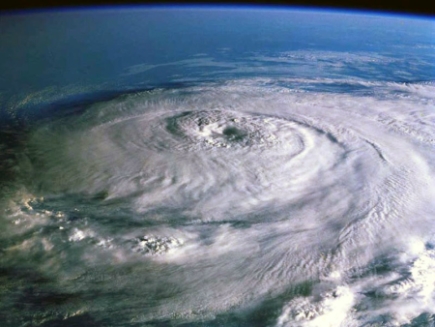A typhoon watch has been posted north of Surf City to Cape Lookout, North Carolina, which means sea tempest conditions are conceivable inside 48 hours.
A typhoon cautioning has been raised north of that to include the Outer Banks of North Carolina, and also Albemarle and Pamlico Sounds.
Wind blasts as high as 107 mph have been timed at Cape Canaveral, Florida, inciting an uncommon NWS "outrageous wind cautioning", as the tropical storm's western external eyewall scratched the Space Coast, and now the most grounded winds are walloping ranges more remote north including Daytona Beach, with harm reported.
Matthew's dubious track in which the eyewall may rub the coast with damaging sea tempest power winds will spread north through Saturday along the upper east Florida coast, Georgia drift, and parts of the South Carolina coast.
Storm surge flooding has as of now happened along the Florida Space Coast and is spreading north.
As per the National Weather Service in Jacksonville, Florida, Friday morning, "Obstruction islands are liable to be broken and it is to a great degree conceivable that new bays will be cut off in the most noticeably bad influenced ranges." The NWS office in Charleston, South Carolina, said Friday tide levels at both Charleston, South Carolina, and Ft. Pulaski, Georgia, could approach or even surpass those seen amid the October 2015 epic surge occasion.
Most recent Status and Storm Reports
Satellite and radar symbolism demonstrate the eye of Matthew walking north-northwest generally paralleling the Florida coast. The focal point of Matthew, indicated by an inward eyewall in the twofold eyewall structure, was as close as 25 miles east of Cape Canaveral, Florida, at 6 a.m. EDT.
Matthew's typhoon power wind field (no less than 39 mph maintained winds) stretches out up to 185 miles from the inside, and tropical storm power winds reach out up to 60 miles from the middle.
Current Wind Speed and Gusts
Various lifted wind sensors on towers close Cape Canaveral have as of now timed wind blasts up to 107 mph, with managed winds of 77 mph in the western external eyewall Friday morning.
Wind blasts from 65-70 mph were timed at both St. Augustine and Daytona Beach, Florida, and some harm has as of now been accounted for, there.
Melbourne International Airport has blasted as high as 70 mph, in this way. A 71-mph blast was recorded at Jensen Beach, Florida.
Blasts more than 60 mph have additionally been timed inland, including over parts of the Orlando metro zone.
Groups of locally overwhelming precipitation had officially spread more than 600 miles north of Matthew, a foreboding sign for the precipitation surge potential, however no reports of blaze flooding had yet been gotten.
An especially strong territory of substantial downpour had now shaped toward the north of Matthew, turning into parts of the South Carolina Lowcountry, eastern Georgia and upper east Florida.











0 comments:
Post a Comment